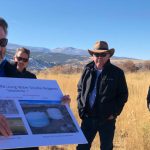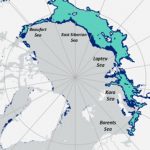Hruby and Truman Fellows take time out to chat
Bette Webster, Nils Otterstrom and Aaron Sharpe talk about their research careers and Sandia
Using a mineral ‘sponge’ to catch uranium
Remediation technology reduces uranium levels 10,000-fold at legacy site in Colorado
A song of ice and fiber
Sandia embarks on first-of-its-kind Arctic seafloor data collection using underwater technique
Common ‘core’: Using molecular fragments to detect deadly opioids
Sandia detection method might someday be incorporated into hand-held instruments
Finding fire and ice: Modeling the probability of methane hydrate deposits on the seafloor
Sandia scientists use machine learning to find fuel source, climate-change driver
Thin explosive films provide snapshot of how detonations start
Thin explosive films provide snapshot of how detonations start
Catching quakes caused by energy exploration before they happen
Sandia scientists use 3D-printed rocks, machine learning to detect unexpected earthquakes
International research team begins uncovering Arctic mystery
New study on submarine permafrost suggests locked greenhouse gases are emerging
Safeguarding biological data
A partnership between Sandia and the Boston firm BioBright LLC to improve the security of synthetic biology equipment has become more relevant after the U.S. and others issued warnings that hackers were using the COVID-19 pandemic to increase their activities.
Material found in house paint may spur technology revolution
The development of a new method to make non-volatile computer memory may have unlocked a problem that has been holding back machine learning and has the potential to revolutionize technologies like voice recognition, image processing and autonomous driving.









